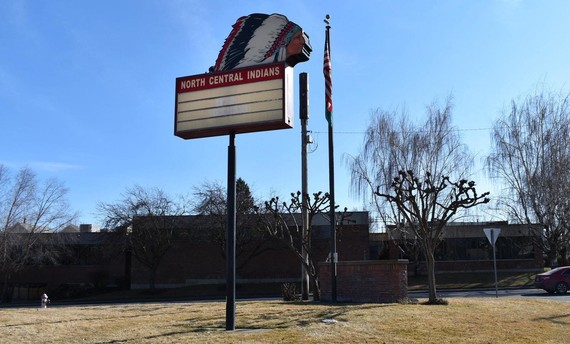Happy Fantastic Friday!
The Child Tax Credit

The American Rescue Plan provided the largest Child Tax Credit ever. The amount that a family can receive per child was raised and instead of the tax relief coming once a year when you file your taxes, the American Rescue Plan will begin sending families monthly payments staring this month! For every child 6-17 years old, families will get $250 and for children under 6, $300. This special pandemic relief will be sent automatically to families earning under $150,000 for a couple and $112,500 for a single parent if you filed your taxes in 2019 or 2020. IF YOU DID NOT MAKE ENOUGH TO FILE TAXES, YOU ARE STILL ELIGIBLE. By filing with the IRS on their Child Tax Credit Non-filer Sign-up Tool you can receive your child Tax Credit payments. Do not delay in signing up. There is no deadline for signing up but payments are not retroactive. The first payment starts in July. You can also find the sign up tool en Español. |
Implementing the Fair Start for Kids Act
Parts of the Fair Start for Kids Act, comprehensive legislation to address the child care crisis in Washington state, and other child care legislation went into effect at the beginning of this month. Below are explanations of some of the changes that went into effect on July 1 to support child care providers and families accessing child care!
Family Subsidy Co-payments Waived for July, August, and September 2021
The Department of Children, Youth, & Families (DCYF) is waiving child care co-payments for families accessing subsidies for July, August, and September 2021. Notifications have been sent to families via postcard, informing them of the waived co-payments and that their co-payments will begin again on Oct. 1, 2021. This provides necessary time to implement the Fair Start for Kids Act changes to eligibility calculations and the co-payment schedule. Learn more.
Full-time Student WCCC Eligibility
Starting July 1, 2021, parents attending full-time community, technical, or tribal college are no longer required to work to qualify for the Working Connections Child Care (WCCC) program. Learn more.
Licensing Fee Suspension
Beginning July 1, 2021, child care providers will not be required to pay licensing fees. Governor Inslee signed SB 5151, suspending fees for child care applicants and licensed child care providers through June 30, 2023. Learn more.
WCCC Reimbursement Rate Increases
Beginning July 1, 2021, reimbursement rates for WCCC increased to the 85th percentile for licensed child care providers who accept WCCC. Learn more.

Learn More & Get Your Questions Answered
DCYF recently launched a webpage dedicated to the Fair Start for Kids Act. The page will contain all information about implementation, including:
- Working Connections Child Care (WCCC) and Early Childhood Education and Assistance Program (ECEAP) changes for families;
- How the Act is supporting child care and early learning providers;
- Expanded resources and innovations for child care licensing;
- Prenatal to age three supports for families and providers; and
- Data and accountability measures that DCYF reports on over the years.
The webpage will be updated frequently as the agency moves through implementation and is a great place to find answers to your questions.
Tribal Roundtable on Public Safety
This week I convened a roundtable with tribal police chiefs, prosecutors, and representatives from the state and federal governments to discuss the implementation of the public safety and police accountability legislation passed this session, as well as the Blake Decision. It’s important that we build strong relationships, work together, and learn from each other as we continue to serve our communities. We honor and respect the sovereignty of our tribal nations and seek to better collaborate across the multiple jurisdictions at the local, state, federal and tribal levels, with focus on how we effectively work towards our shared goals of public safety and criminal justice reform.
What’s Happening with Redistricting?
All residents of Washington state are welcome to participate in the 2021 redistricting process. There are many ways for you to participate, including telling the Commission about your community by writing or calling in, sharing a video, drawing a boundary map of your community, attending and testifying at public meetings, and by collaborating with your neighbors or community organizations as a group.
There is no wrong way to describe your community to the Commission, and they’ve provided guidance on how you can share your story. You may submit to the Commission at any time, in any language, in multiple formats, before or after our District’s outreach meeting.
An Update from the Commission
The Washington State Redistricting Commission (WSRC) has rolled out the first phase of a publicly available mapping tool, which allows for the mapping of state legislative and congressional districts using the most accurate population estimates available. However, they are not the official census data the WSRC will use to draw maps this Fall. The official Census data is not available until mid-August.
This is the first time in our state’s history that a redistricting commission has offered this level of technology to residents across Washington. Phase Two will begin when the official redistricting data from the Census Bureau becomes available. That is when people will be able to submit formal maps to the commission for consideration. The mapping software is being released now, without official data, so Washingtonians can learn how the tool works and become familiar with population trends. Once the official data is released, the public will be able to use the tool to create formal map submissions.
The WSRC will inform the public once the official Census data has been added to the mapping site. The expectation is that this announcement will come in late August or early September.
Find more information about the Washington State Redistricting Commission. Watch their meetings live and recorded on TVW or YouTube.
National Efforts on Native Mascots
At the National Congress of American Indians’ (NCAI) 2021 Mid Year Conference, held virtually from June 20 to June 24, members of NCAI’s Ending “Indian” Mascots team delivered a presentation on the National School Mascot Tracking Database. A link to the video can be found at NCAI’s recently revamped ‘Proud to Be’ webpage.
The National Congress of American Indians (NCAI) is the oldest, largest, and most representative American Indian and Alaska Native organization serving the broad interests of tribal governments and communities. It has been leading Indian Country’s movement to eradicate offensive “Indian” mascots from sports and popular culture for the past 50 years by educating schools, sports leagues, and the general public about the many harms they cause Native people. To learn more, please click here.
Here in Washington state, we’ve taken steps to end the derogatory use of Native Americans as mascots in public schools through the passage of House Bill 1356, which I championed on behalf of our tribal communities, Native students, and future generations of Washingtonians. Often, the use of Native American names, symbols, or images is premised on the promotion of unity or school spirit. However, this use fails to respect the cultural heritage of Native Americans and is contrary to the goal of making schools safe and respectful learning environments. The new law is in effect and we’re already seeing it make a difference and schools taking steps to make this needed change!
North Central High School in Spokane is retiring its ‘Indians’ mascot. PHOTO CREDIT: REBECCA WHITE / SPOKANE PUBLIC RADIO
Salmon in the News
“For the last century, Seattle City Light has operated three dams on the Skagit to generate hydropower – which provides approximately 20% of the electricity for Seattle residents and businesses. But that cost-effective, carbon-neutral power comes at a cost to the Skagit Valley ecosystem and indigenous tribes.
The Upper Skagit Tribe said they were “forced” into a public call to action in the form of a billboard because they don’t think Seattle’s top officials…understand the trauma Gorge Dam and the hydropower operation inflicts on the tribe.
The city is in the process of having their dams relicensed by the federal government…As part of this process, in public documents and in person, the tribe has requested the city study the viability of removing Gorge Dam. So far, City Light has rejected their appeal.” – via KING 5
Learn more about the ongoing license renewal negotiations around three hydroelectric dams operated by Seattle City Light on the Skagit River in this recent article by KING 5.
Thank you all for taking to the time to read this week’s Fantastic Friday, and for taking an interest in our progress at the House of Representatives. Now that we’re headed into the summer months, I will be sending out an official Fantastic Friday twice a month, with two weeks on and two weeks off.
Please feel free to reach out to me using the information below, with any questions, inquiries, or concerns you may have.
I am here for you!
All best wishes,

Rep. Debra Lekanoff


